Infant Health Summit Spotlights Diversity and Access Disparity
October 30, 2017
“Man up” isn’t the advice you’d expect to hear at a policy summit on health care access for mothers and infants. But it’s just what Adam Busby, star of TLC’s “OutDaughtered” and keynote speaker at the third annual Infant Health Summit, felt during his struggle with postpartum depression.
The topic was just one of several surprising trends that summit participants discussed. Expert panels also explored how the opioid crisis is bringing a baby boomer disease to pregnant women and how an attempt to fix hospital tubing mix-ups could endanger preemies in a new way. Other discussions centered on how existing problems, such as preemies’ inability to access preventive treatment for a deadly seasonal virus or human donor milk for optimal nutrition, continue to pose risks.
Dubbed “Diversity & Disparity: Breaking Down Access Barriers,” the summit welcomed health care providers, advocates, parents and other stakeholders. It was sponsored by the Institute for Patient Access and the National Coalition for Infant Health.
Postpartum Depression
Several months after releasing an educational infographic on postpartum depression, the National Coalition for Infant Health used its summit to examine the lesser known experience of fathers who battle postpartum depression.

TLC’s “OutDaughtered” chronicles the life of Adam Busby and his wife, Danielle, as parents of all-girl quintuplets. Earlier this year, during the show’s third season, Adam came public with his experience of postpartum depression.
Immediately following his daughters’ births, Adam put his feelings aside. “Nothing else really mattered except the well-being of these babies,” he explained. But as time passed, his experience became undeniable. “I started to withdraw,” he recalled. “My best friends would call…I didn’t really want to go do anything.”
Busby encourages other dads to recognize postpartum depression for what it is and to seek treatment.
Safety & Prevention
Tubing Safety
In “Safety in the NICU: New Tubes, New Problems?” panelists discussed how the tubes that carry vital fluids to newborns can also pose deadly risks. Misconnections, where human error leads to the wrong tube carrying the wrong substance to the wrong location in a patient’s body, has long been an issue, explained panelist Suzanne Staebler, DNP, of Emory University. But when the error led a pregnant mother and her unborn child to die, the issue prompted a 2010 New York Times article – and increased public attention.
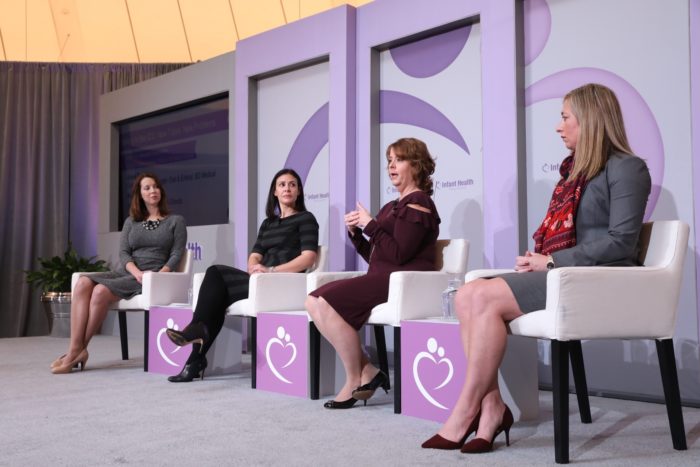
The solution to misconnections, however, brought on challenges of its own. Updated manufacturing guidelines led to the ENFit design, where male and female tubes connect only with one another. A tiny reservoir in the connector allows for excess medication to idle, potentially increasing an infant’s dosage beyond what’s intended.
The seemingly small risk has made big waves in the infant health community. Keliana O’Mara, PharmD, of the University of Florida Health Shands Children’s Hospital, explained that the risk may be small unless you’re “a family whose infant has a 10% chance of living.” For such families, O’Mara argued, it’s “a very big risk.”
Arleni Garcia from the global medical technology company Becton Dickinson described her company’s decision to leave the industry’s manufacturers association over the issue. “We will not compromise on patient safety,” Garcia explained. Suzanne Staebler, DNP, who’s spent her career working in NICU settings, emphasized the need for hospitals to consider other designs before adopting or mandating use of ENFit.
The National Coalition for Infant Health also released a new video on the topic during the summit.
Hepatitis C Cures & Infant Transmission
Experts took up another emerging issue in “Vertical Transmission: A New Wave of Hepatitis C Carriers.” As Coleman Smith, MD, explained, hepatitis C infections have spiked in recent years. Younger people, including women of childbearing age, have joined the ranks of baby boomers in fighting the disease, which progressively damages the liver.
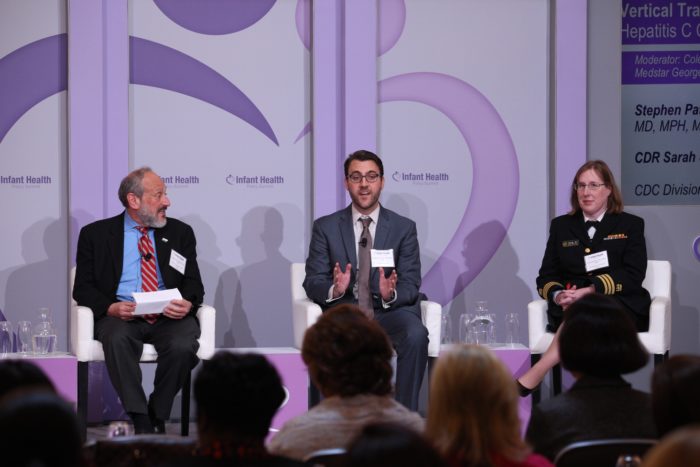
Cures for hepatitis C have not been proven safe for pregnant women, and no FDA-approved therapy exists for infants who have contracted the virus in utero. Sarah Schillie, MD, of the CDC Division of Viral Hepatitis, noted that about 29,000 pregnant women with HCV give birth every year, resulting in about 1,700 infected perinatally. Stephen Patrick, MD, of Vanderbilt University, described how the stigma surrounding IV drug use can deter pregnant women from seeking medical help. The attitude is “How could you do this to your baby?” Dr. Patrick explained.
The most effective approach would be to screen and treat woman of childbearing age before they become pregnant, as a new video from the National Coalition for Infant Health and the Alliance for Patient Access explains. But state Medicaid and health plan barriers make that difficult by requiring advanced liver damage or a sustained period of sobriety before patients can qualify for treatment. Some plans restrict prescribing privileges for hepatitis C cures to only specialists, limiting patients’ opportunities for treatment.
If policymakers don’t adjust their approach to proactively treat young women and protect unborn babies, Dr. Smith warned, the United States may see yet another wave of hepatitis C in 20 or 30 years as infected infants become adults.
Infants’ Access to Treatment & Nutrition
Therapies for Neonates
There has not been a new drug approved to improve survival and outcomes in premature infants in over 25 years. And this is a problem, explained Andrew Rosenberg, director of the Newborn Health Initiative. Once a preemie himself, Rosenberg advocates for medicines that are designed for and tested on infants.
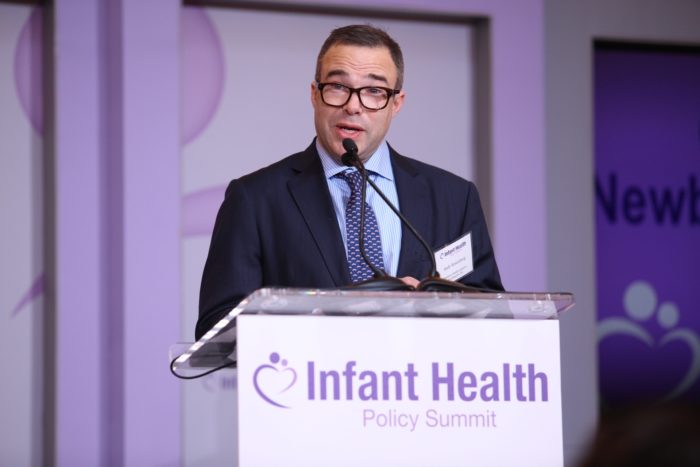
Incentives have led to an increase in pediatrics studies submitted to the FDA, Rosenberg explained, but few labeling changes have included neonates – babies 28 days old or younger. The Promoting Life-Saving New Therapies for Neonates Act, HR 2641, gives Rosenberg hope that this trend can finally be reversed.
Exclusive Human Milk Diet
Like medical therapies designed specifically for infants, human milk can have a powerful impact on the lives of newborns. Its value for the smallest premature infants, those weighing in at 1,250 grams or less, is especially important. But as participants in the “Milk Matters: Diversity, Quality & Safety” panel discussed, access to a diet of exclusive human milk and human milk fortifiers can be largely a matter of cost and coverage.
As Mitchell Goldstein, MD, medical director of the National Coalition for Infant Health, explained, among some health plans and policymakers the diet is “still often considered a nice-to-have food product, not the essential medical intervention we know it to be.” A diet of exclusive human milk has been shown to decrease the incidence of necrotizing enterocolitis, an intestinal disease that can be deadly for preemies.
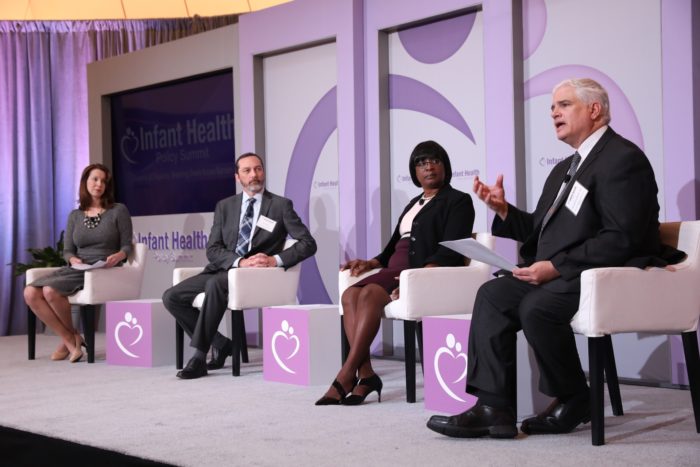
Without Medicaid coverage for fortifiers and human donor milk, however, preemies remain vulnerable. The inability to access an exclusive human milk diet can compound disparity for low-income, African American babies, whose mothers give birth prematurely at a higher rate than do their Caucasian peers.
Martha Dawson, DNP, of the National Black Nurses Association, urged policymakers to take the necessary steps to make an exclusive human milk diet available to all preemies regardless of race and income. “You have the evidence,” she argued, “You know it works.”
Meanwhile, Scott Eaker of Prolacta Bioscience emphasized the need for quality, safety and accurate labeling for donor human milk. With hospitals using human donor milk to help preemies grow, health care providers need an accurate description of its nutritional content. They also need to verify that it’s safe and free from contaminants such as nicotine and illegal drugs.
Preventive Treatment for RSV
In “The RSV Story: When Treatment is Out of Reach but Not Out of Mind,” preemie parent and advocate Julie Ann Burton described her son’s battle with respiratory syncytial virus. “We were lucky,” Burton explained, describing her preterm son’s treatment with palivizumab, preventive therapy against the deadly seasonal virus.
Three years later, though, Julie Ann’s son wasn’t so lucky.
Insurance denied coverage for preventive RSV treatment, and Julie Ann and her husband couldn’t afford the drug themselves. Without protection, her then-toddler caught the virus. He wound up in the Pediatric Intensive Care Unit, dependent upon a ventilator to breathe, fighting both RSV and pneumonia.
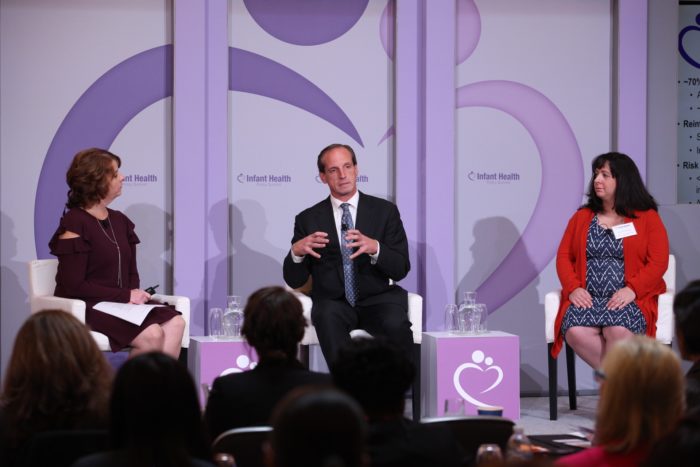
That battle is unfortunately common, explained Evan Anderson, MD, of Emory University. RSV poses “an extraordinary risk” to preemies, Dr. Anderson explained, and can exact a devastating financial and emotional toll on parents. But as moderator Suzanne Staebler, DNP, explained, 2014 guidelines from the American Academy of Pediatrics Committee on Infectious Disease continue to leave the majority of preemies without health plan coverage for the preventive treatment.
For social media coverage of the summit, see #InfantSummit2017. All videos shown at the summit are available at the National Coalition for Infant Health’s website.
Tags: Hepatitis, Infant, Regulatory IssuesCategorized in: Blog

